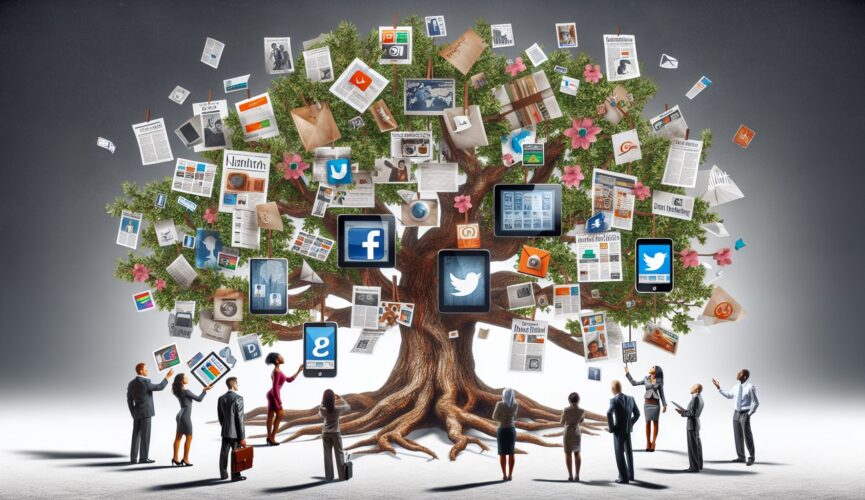In today’s digital world, it’s easy to assume that printed marketing materials are a thing of the past. After all, why bother with physical collateral when you have endless online channels at your disposal? However, the truth is that printed marketing materials continue to play a vital role in any successful marketing campaign. From business cards to brochures and posters, these tangible assets still carry a significant impact in capturing attention, conveying information, and connecting with your audience. In this article, we will explore the enduring power of printed marketing materials and why they should not be overlooked in your marketing strategy.
The Tangible Effect: Creating a Lasting Impression
One of the key advantages of printed marketing materials is their ability to create a tangible effect, leaving a lasting impression on your target audience. In a world flooded with digital content, physically holding a well-designed brochure or business card can be quite refreshing. The weight, texture, and visual appeal of printed materials can engage multiple senses, making your brand more memorable.
Imagine attending a networking event where everyone is swapping contact information through mobile devices. When you hand over a beautifully designed business card, it stands out among the digital clutter, making a strong impression on the recipient. This simple act demonstrates your attention to detail, professionalism, and gives people something physical to remember you by.
Reinforcing Brand Identity: Consistency is Key
Printed marketing materials are an excellent opportunity to reinforce your brand identity and messaging consistently. From the fonts and color palettes to the overall style, every design element can be aligned with your brand guidelines. Ensuring brand consistency across all touchpoints, whether online or offline, strengthens your overall brand recognition and legitimacy.
Consider a retail store with eye-catching posters featuring their logo, brand colors, and evocative visuals. By consistently using these materials in-store, the brand gains a sense of familiarity and credibility, ultimately creating a stronger connection with customers. Printed materials act as physical ambassadors for your brand, conveying a sense of trustworthiness and professionalism.
Targeted Reach: Personalize and Connect
Printed marketing materials can be tailored to a specific audience, allowing you to personalize your messaging and connect on a deeper level. From direct mail to custom catalogs, the ability to segment your target audience and deliver tailored content is invaluable. By utilizing data-driven insights, you can create personalized materials that speak directly to the recipient’s interests and pain points.
For example, a travel company can send out travel brochures to individuals who have shown an interest in particular destinations. By showcasing stunning visuals and providing relevant information, the brochure creates a personal connection, enticing potential customers to explore further. This targeted approach strengthens your relationship with customers, showing that you understand their needs and are there to fulfill them.
Increased Visibility: The Print-Digital Synergy
While digital marketing provides immense reach, printed marketing materials can complement and reinforce your online efforts to achieve even greater visibility. By seamlessly integrating print and digital strategies, you can amplify your brand messaging and drive engagement.
QR codes, for instance, serve as a bridge between the print and digital worlds. By including these codes in your printed materials, you can direct customers to specific landing pages, social media profiles, or promotional offers. This synergy between print and digital marketing not only enhances customer experience but also tracks the effectiveness of your campaigns by analyzing QR code scans.
Longevity and Accessibility: Breaking Through the Digital Noise
Unlike digital advertisements that can easily be skipped or forgotten, printed marketing materials have a longer shelf life, allowing your message to persist and remain accessible. Whether it’s a magazine ad or a physical brochure, these materials have a physical presence that can engage customers over an extended period.
Imagine flipping through a magazine and stumbling upon an ad for a product or service you didn’t know you needed. With a simple tear-out or bookmark, the ad can be saved for future reference, acting as a constant reminder of your brand.
Furthermore, printed materials offer accessibility to demographics that may not have reliable access to the internet or may have limited exposure to digital media. By diversifying your marketing channels, you can ensure you reach a wider audience, thus maximizing your potential customer base.
Eco-Friendly Considerations: Sustainable Printing Practices
While discussing the merits of printed marketing materials, it is essential to consider the environmental impact of such practices. With sustainability becoming increasingly important, adopting eco-friendly Printing methods is integral to reducing our carbon footprint.
By partnering with Printing providers that prioritize sustainable practices, such as using recycled materials and eco-friendly inks, you can maintain the benefits of printed marketing materials while minimizing harm to the environment. This commitment to sustainability not only aligns with current consumer values but also showcases your brand’s responsibility towards the planet.
Conclusion
In a world dominated by digital marketing strategies, it’s essential not to overlook the power of printed marketing materials. Tangible and visually appealing, these materials create a lasting impression and reinforce your brand identity. By personalizing your messaging and integrating print and digital strategies, you can maximize your reach and engagement. While being mindful of sustainability, printed marketing materials are still a valuable asset in any marketer’s toolbox.
So, next time you plan your marketing campaign, don’t underestimate the impact of a well-designed brochure, flyer, or business card. Embrace the power of printed marketing materials and unlock their potential to captivate, connect, and convert your target audience.

